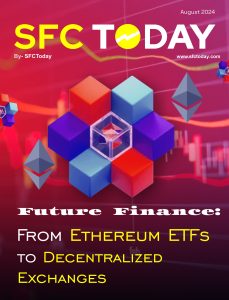DeFi’s Rise: How Blockchain Protocols Are Reshaping Crypto Investment
Decentralized finance, or DeFi, is transforming the world financial system. DeFi provides lending, trading, and asset management services without the intervention of traditional institutions. Based on blockchain technology, DeFi protocols are built on smart contracts that allow users to directly execute transactions. With the growing industry, some great projects are charting the future of digital finance in 2025.
The Rise of Decentralized Finance
DeFi emerged by creating a decentralized system of banking. Platforms constructed products that rendered investment and lending possible to any individual who has a blockchain wallet. In contrast to conventional banks, DeFi protocols eliminate third-party intermediaries, which translates into cost savings and improved transparency. The untrammeled expansion of DeFi after 2020 signals a wider transition in the design and use of financial instruments.
Key Drivers Behind Adoption of DeFi
DeFi possesses numerous benefits over conventional finance systems. The benefits are spurring adoption and investment into DeFi protocols.
Smart contracts make it possible to have autonomous transactions that respond in accordance with coded rules. Smart contracts disintermediate human processing and reduce the risk of human error.
Permissionless protocols eliminate barriers to entry. Anyone can access DeFi protocols without approval, opening financial systems to a wider audience.
Decentralization avoids interference and censorship. It is shared among a web of actors instead of being in central control.
Tokenized incentives drive user interaction. Governance tokens are distributed by various DeFi platforms that offer owners a stake in protocol governance in terms of percentage.
Best DeFi Projects That’ll Define 2025
There are numerous DeFi platforms that set the pace using new finance models, better scalability, and additional access to digital assets.
Uniswap: Uniswap is continuing decentralized trading on its automated market maker framework. Releases of versions highlight efficiency and customizability.
Aave: Aave remains in the lead of decentralized lending. The protocol supports collateralized loans, flash loans, and stable interest rates.
Compound: Compound provides interest-based lending and borrowing on an open algorithm. Assets are contributed by users for passive returns.
Curve Finance: Curve Finance is an exchange specialist for stablecoins. It reduces slippage through best-exchanging low-volatility asset-optimized liquidity pools.
Lido Finance: Lido Finance maximizes blockchain participation through liquid staking. Tokens are awarded to stakers, which remain liquid as the networks are locked up.
MakerDAO: MakerDAO remains a pillar of DeFi through its decentralized stablecoin DAI. It aggregates real-world assets for collateral stability.
Synthetix: Synthetix allows for the creation of synthetic assets that are tied to the worth of real-world assets. The protocol creates permissionless derivative markets.
GMX: GMX provides decentralized perpetual futures. GMX allows for fee-efficient, leveraged trading with an effortless on-chain experience.
Pendle Finance: Pendle Finance is a yield tokenization initiative. One can divide and trade yield portions of DeFi assets to reap extra returns.
Radiant Capital: Radiant Capital is offering cross-chain lending with native liquidity. Its interoperability focus minimizes fragmentation between networks.
Impact on Legacy Financial Infrastructure
The advent of DeFi destabilizes the grip of centralized investment institutions and banks. Legacy infrastructure is reacting by exploring the blending of blockchain and custodianship of digital assets. DeFi protocols are less expensive and have faster settlement rate, pushing legacy infrastructure to innovate.
Some finance organizations are partnering with DeFi projects or launching their own decentralized solutions. These moves portend a future where off-chain and on-chain finance coexist, with blockchain providing the operational hub.
Regulatory Environment and Risks
Whereas DeFi has benefits, it is under increasing regulatory pressure. Regulators are concerned with compliance, financial stability, and consumer protection. Without definite regulations, developers and investors are left in limbo.
Smart contract risks due to vulnerabilities, governance risks, and liquidity risks are also there. Regulators in various jurisdictions are considering how to integrate DeFi into existing legal frameworks without strangling innovation.
Jurisdictions like the European Union and the United States are proposing new policy suggestions to regulate DeFi activity. More clarity will emerge in the next couple of years, defining the path of the industry.
What the Future of DeFi Looks Like
In the years ahead, DeFi will more and more overlap with conventional finance. Improvements in user interfaces, scalability, and security will gain traction. Institutional investment is on the rise as platforms add compliance features and risk management. Tokenization of real-world assets is also gaining traction. Real estate, equities, and bonds are being tokenized and moved to the blockchain, allowing DeFi protocols to accept more diverse types of collateral.
As DeFi continues to develop, innovation will continue to be centered on inclusivity, transparency, and independence. These principles distinguish it from traditional finance and continue to make it attractive.
Conclusion
The decentralized finance space is continuing to redefine the building and offering of financial instruments. Projects in 2025 are bringing new ways of trading, lending, staking, and earning. By removing old middlemen and offering open systems, DeFi is building a new model for global finance. Through good design and regulatory common sense, it can rebuild economies around the world.


